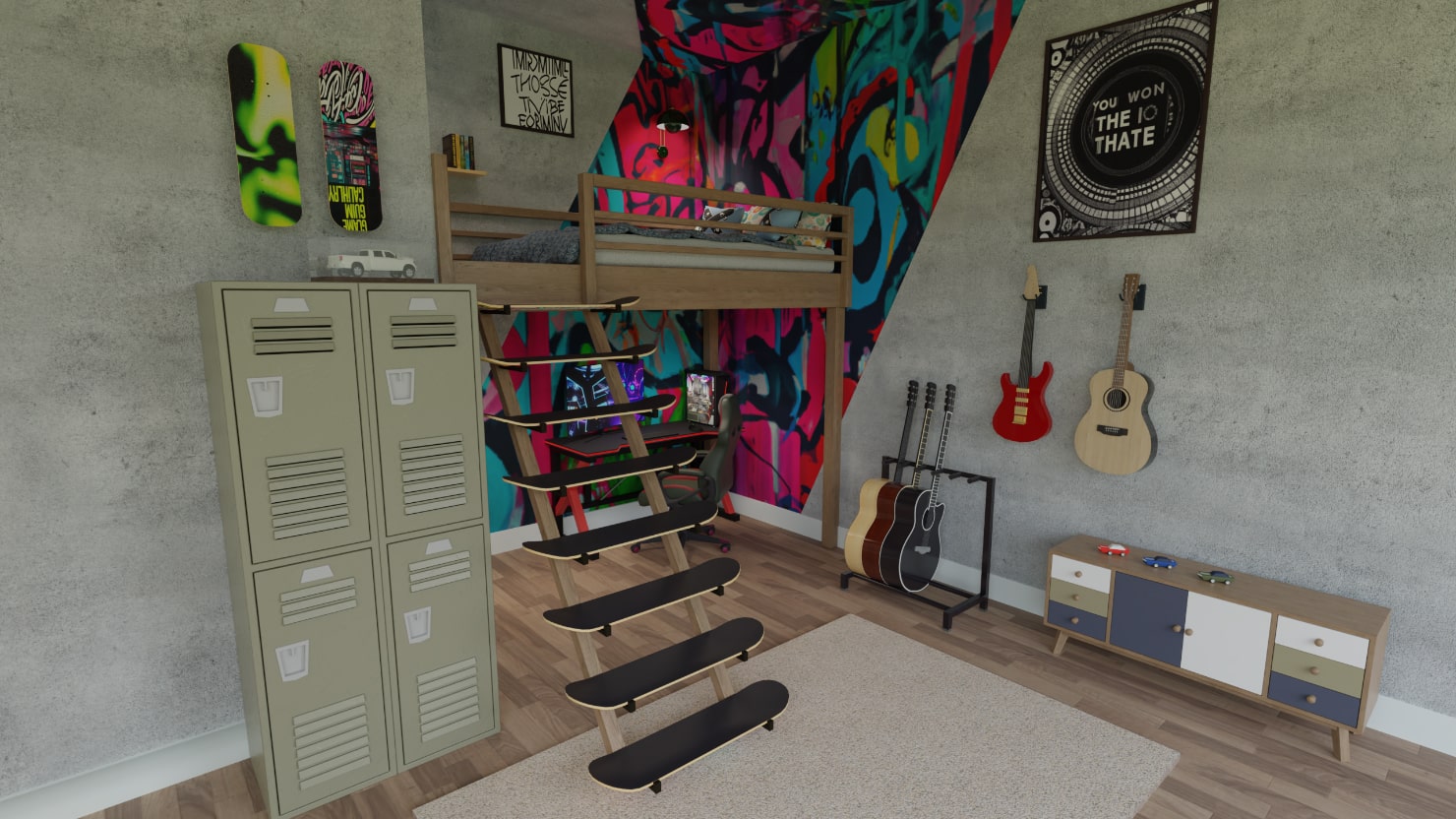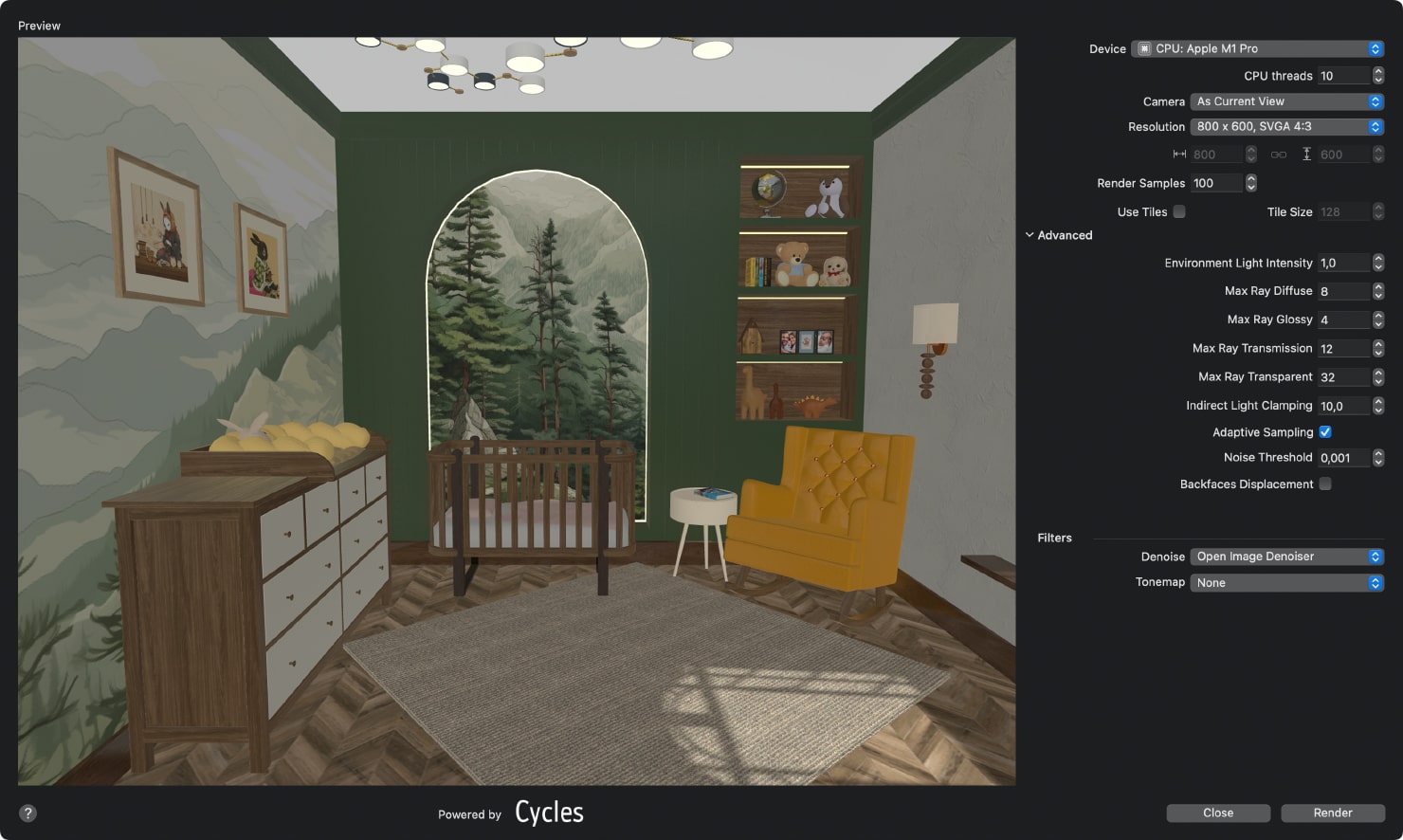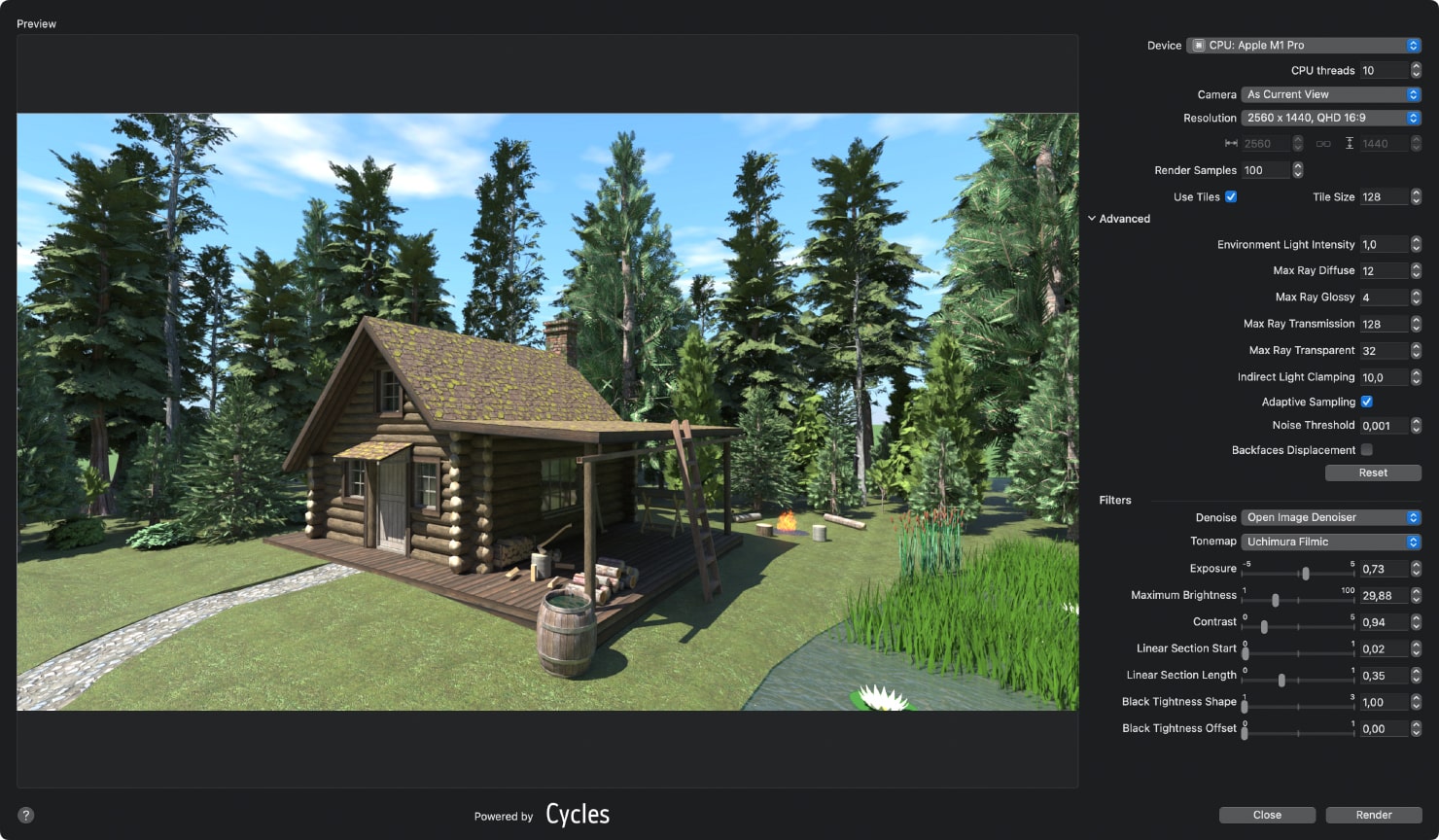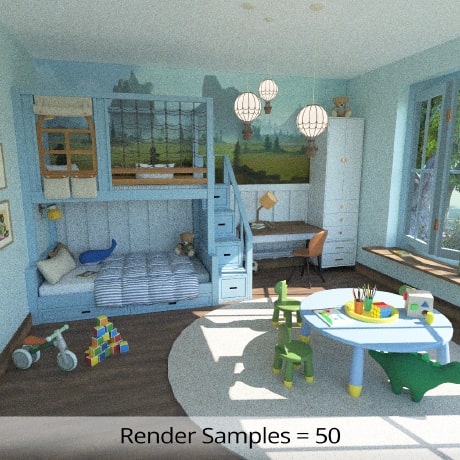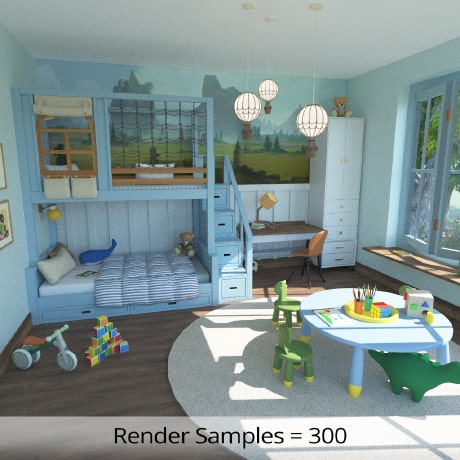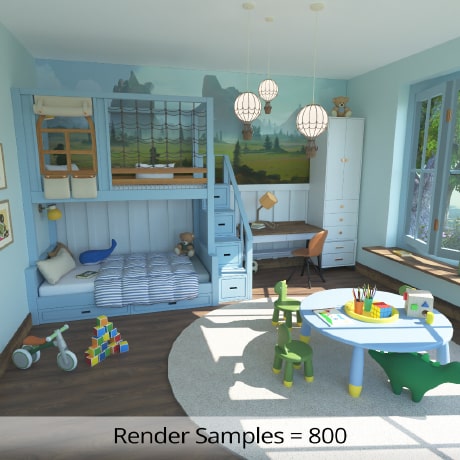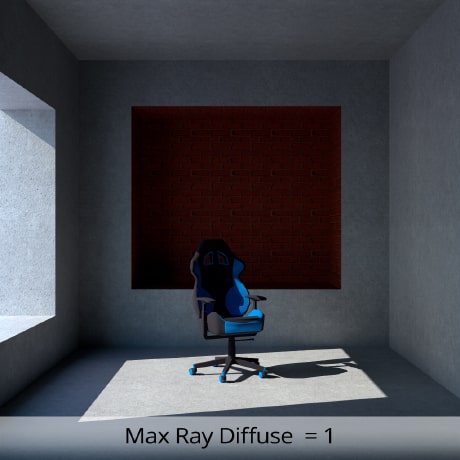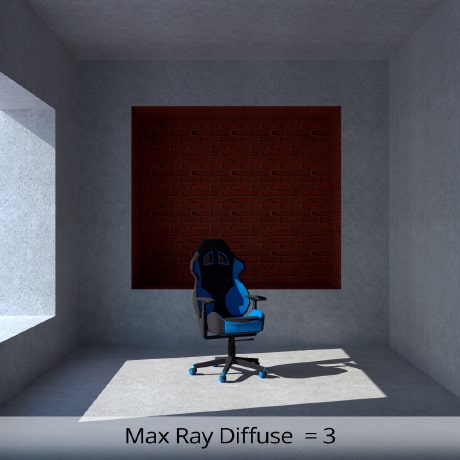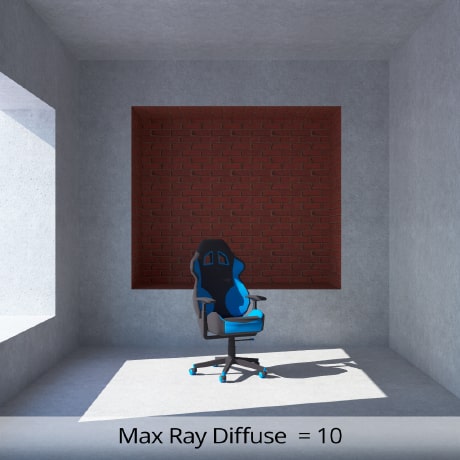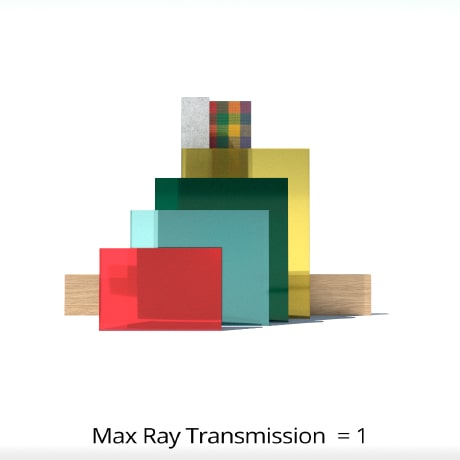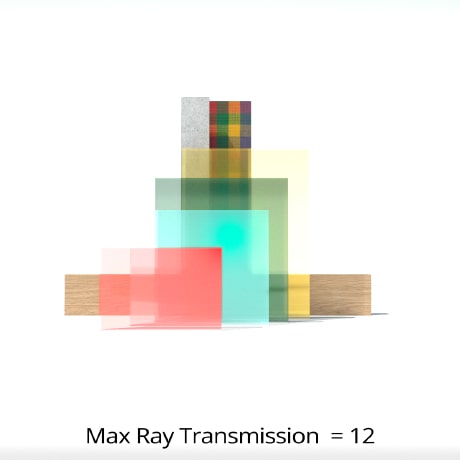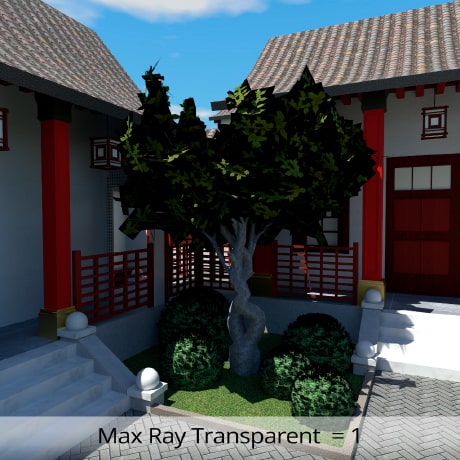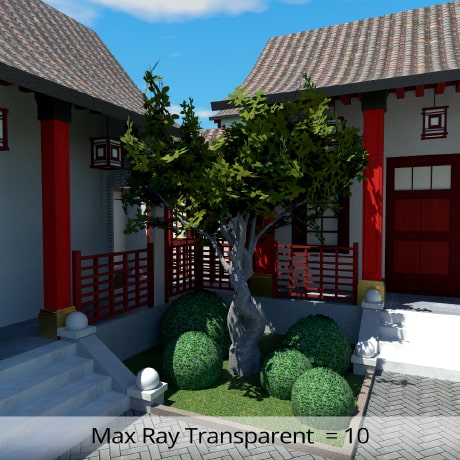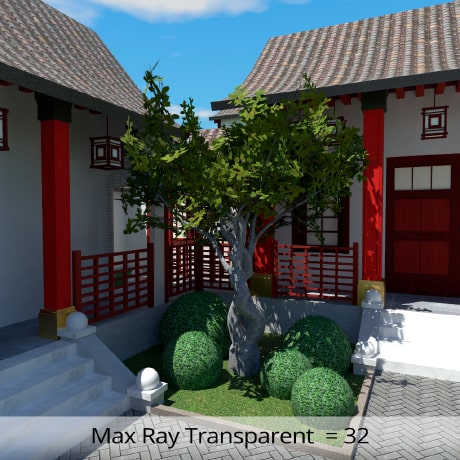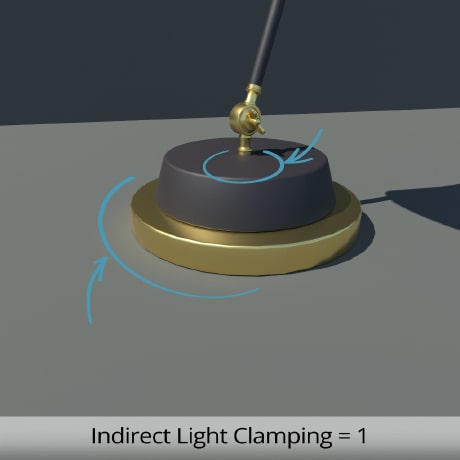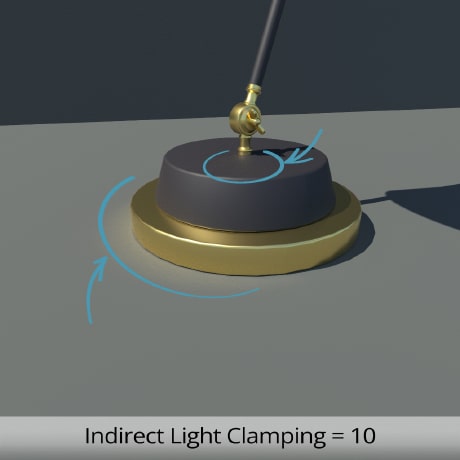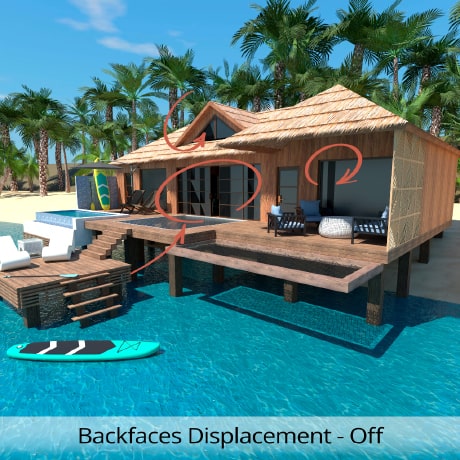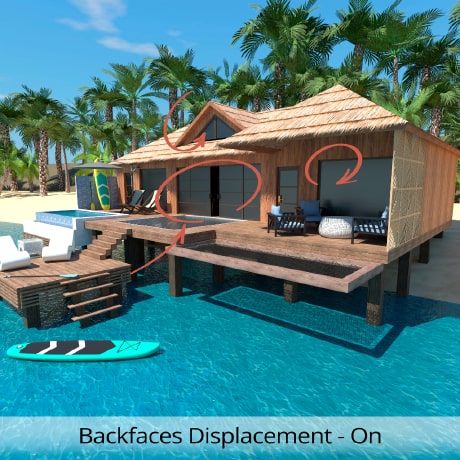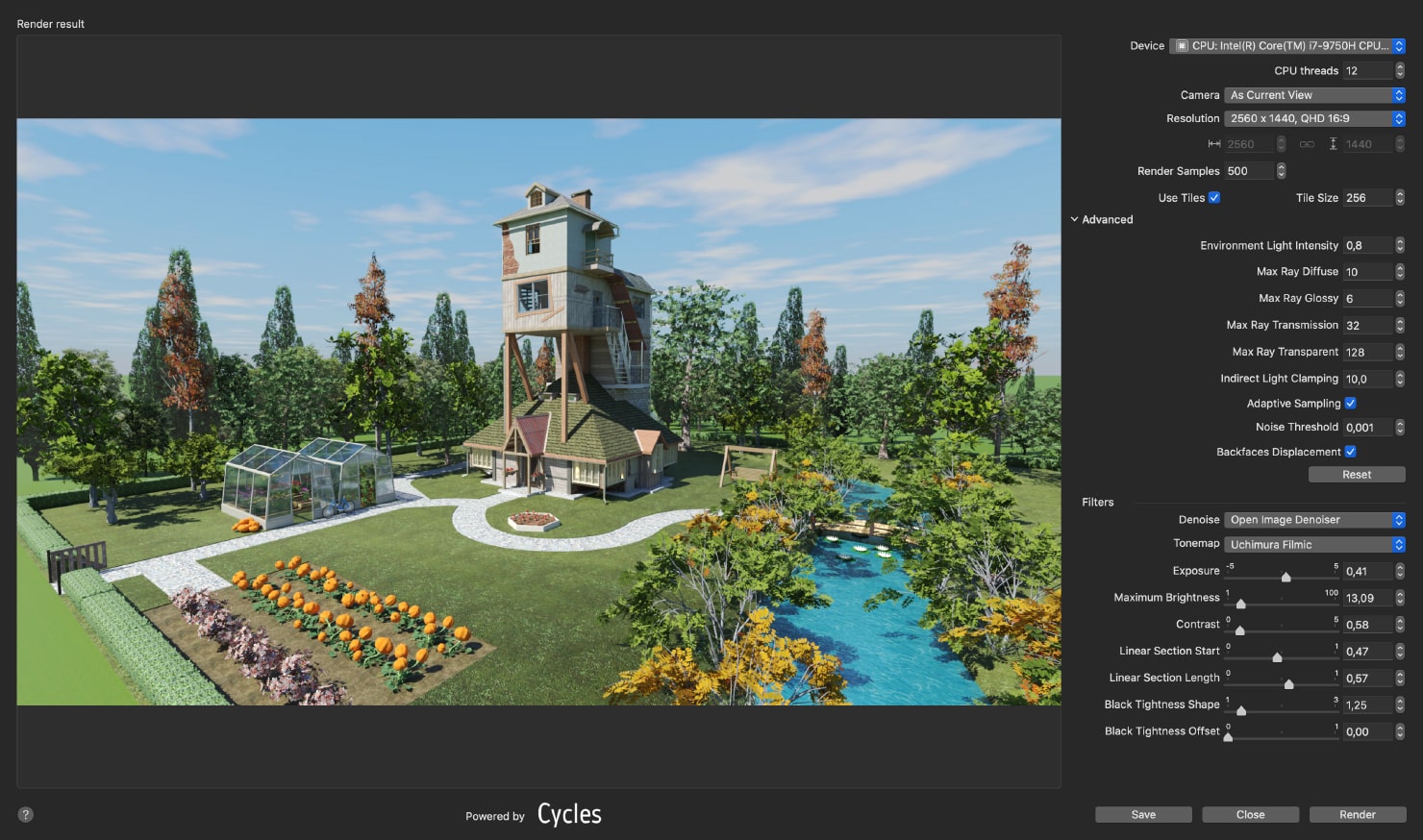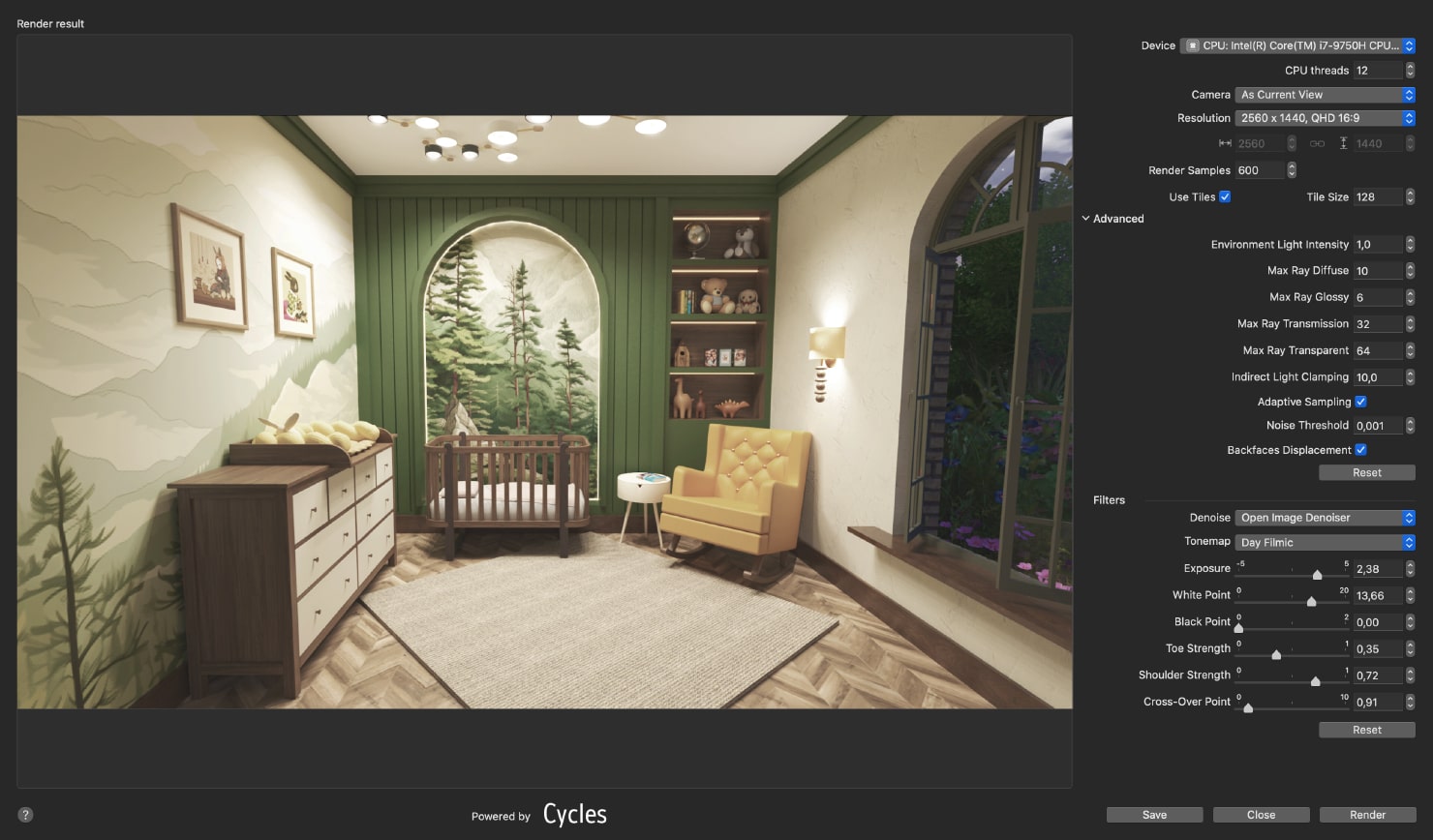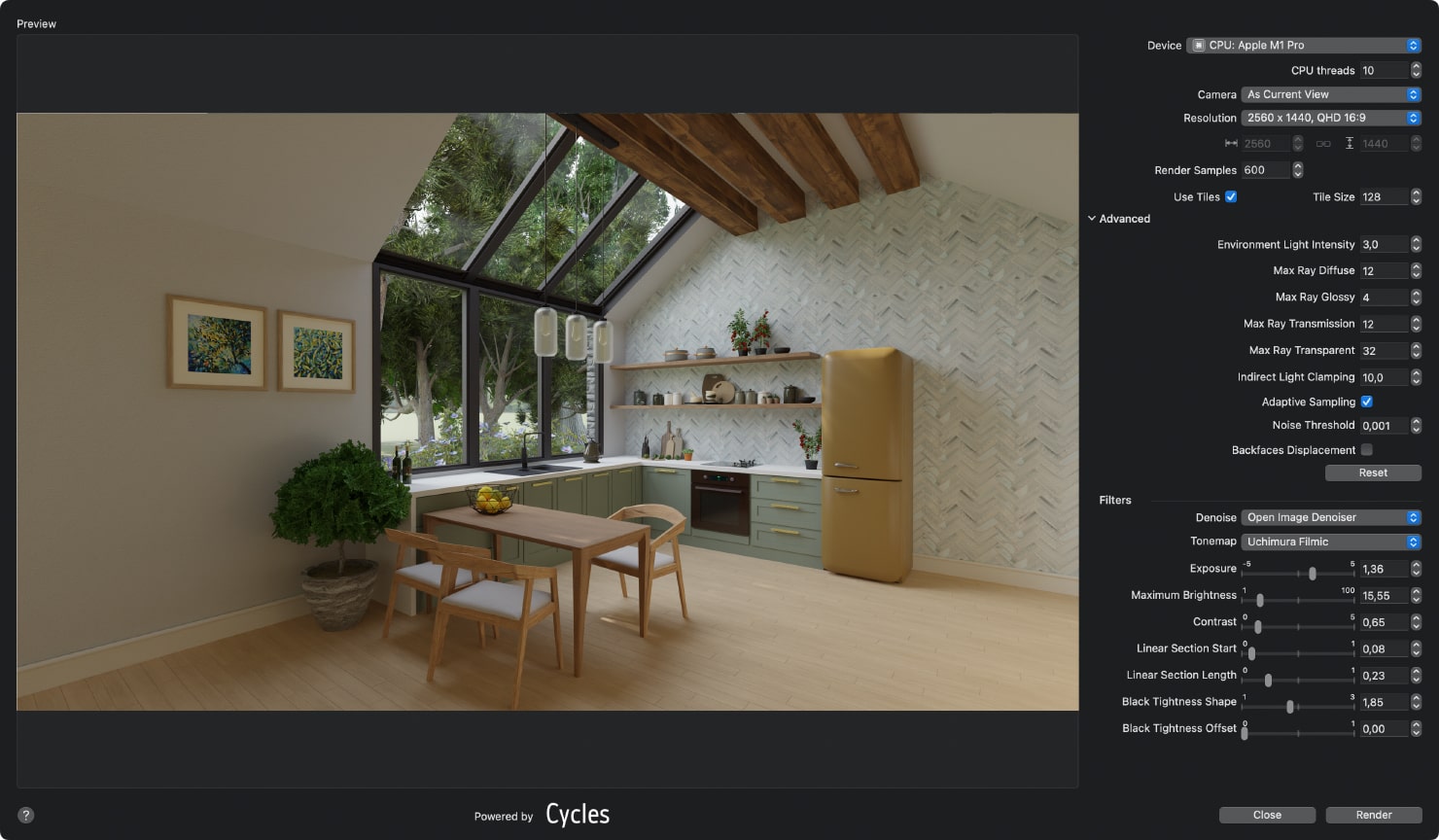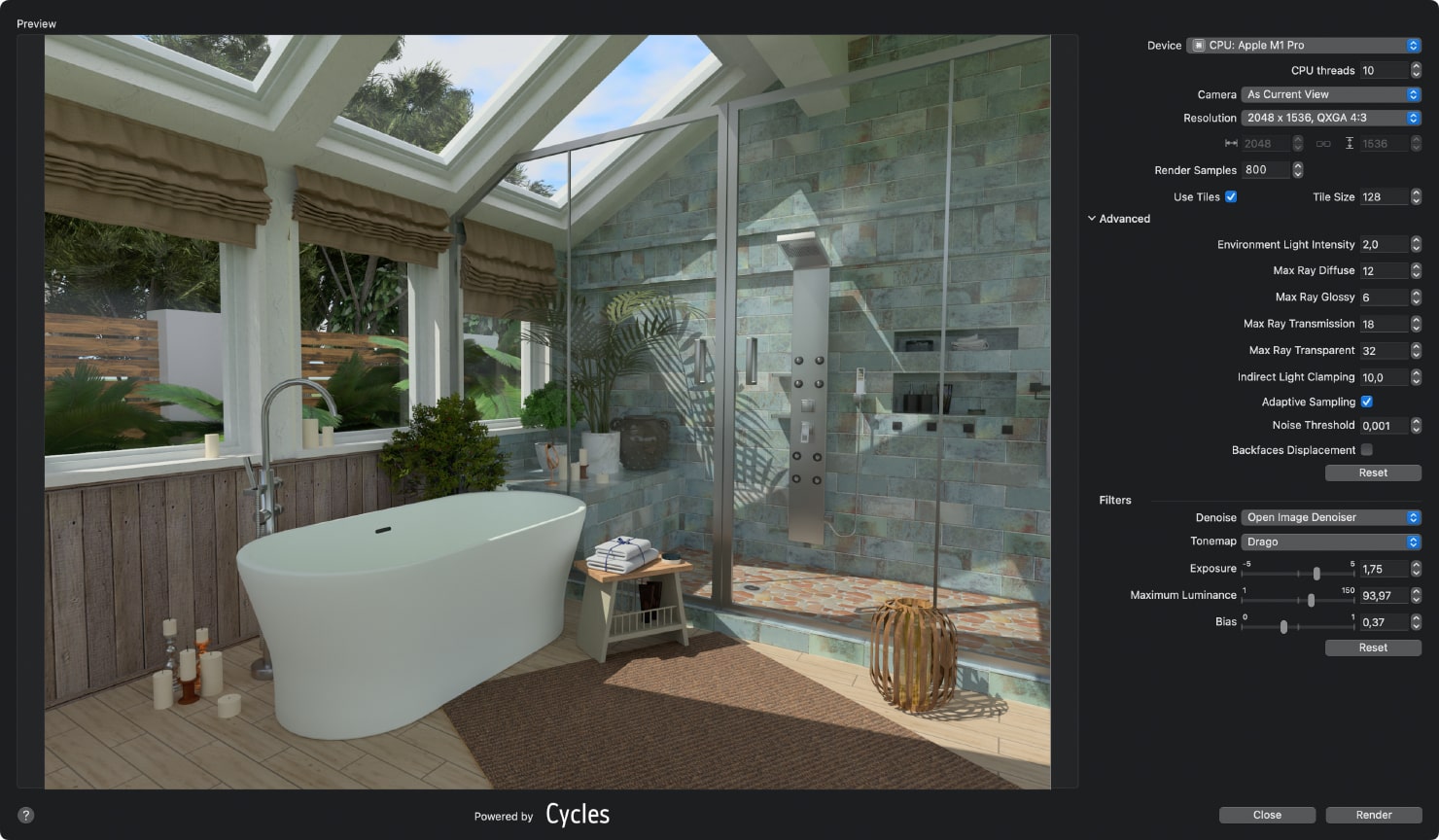What’s the Difference Between Cycles and AMD Radeon™ ProRender?
Cycles and AMD Radeon™ ProRender are two different rendering engines used for creating images based on three-dimensional models. Cycles was initially developed as a part of Blender and was directly integrated into the software. Cycles supports both central processing units (CPUs) and graphics processing units (GPUs) for speeding up the rendering process. AMD Radeon™ ProRender also supports both CPUs and GPUs but specializes more on the AMD Radeon™ graphics processors.
Both Cycles and AMD Radeon™ ProRender follow a similar algorithm of rendering: Cycles uses the ray-tracing method for modeling lighting, reflections, refraction and shadows. It offers an ample scope for setting the materials and lighting, which allows you to achieve a high level of realism. AMD Radeon™ ProRender also uses ray tracing and supports physically-based materials and lighting, as well as global illumination.
Cycles provides high-quality images by using physically-based rendering techniques (of light and materials). Even with a large number of samples, the rendering process is really fast due to the usage of the GPU. AMD Radeon™ ProRender also offers a good quality of renderings and can be quite fast in particular situations, especially when using the graphic processors by AMD Radeon™.
Note that macOS 12.3 or later is required for rendering with Cycles using GPU on Mac devices (but you can render using CPU with operating systems prior to macOS 12.3). To use Cycles on a Windows device, Windows 10 version 18362.0 or higher is required, and you can only render using CPU. As for AMD Radeon™ ProRender, starting from macOS 14.0 the only available rendering is using CPU.
Render Devices and CPU Threads
The first category that you encounter in the opened window is Render Devices, which lists the available devices for rendering, i.e. CPU or GPU. It is worth noting that it is normal to find only one available device for rendering in this list, as it will be the case for most users.
The CPU Threads parameter deals with the number of processing threads on the central processor (CPU) that will be involved in the rendering. It defines the number of the processor cores that are going to be used for handling the tasks of the rendering engine, when GPU is untapped or when CPU is used along with GPU for the sake of speeding up the process.
The maximum number of threads is defined by the model and characteristics of your CPU, the total number of the processor cores and threads, the level of complexity and size of the project that you are rendering. Increasing the number of threads can speed up the process of rendering with the CPU, but it can also affect the performance and stability of the system and the use of resources.
If you own a processor with numerous cores and threads, you can experiment with this parameter to find the best value for your system and your project. Keep in mind that, in most cases, you will only achieve the maximum speedup of the rendering process by using the graphics accelerator (GPU), since it is designed specifically for handling complex graphics calculations.
Camera
The Camera drop-down list contains all cameras available in the current project. Here you can choose the camera with the view that you want to render.
Resolution
Resolution controls allow you to either choose one of the predefined dimensions of the image or to set the image width and height manually. The resolution defines the number of pixels in the image distributed horizontally and vertically. It functions as two numbers, for instance, 1920 × 1080, where 1920 is the width (the horizontal resolution) and 1080 is the height (the vertical resolution). The higher the resolution, the more detailed the rendered image will be. However, rendering an image with higher resolution also requires more time and resources.
This parameter is important while setting up the rendering engine, because it impacts the quality of the rendered image and its usage. You should choose the resolution that best suits your needs, taking into account the limitation of resources. A higher resolution can be useful for printing and for large screens, while a lower resolution is suitable for publishing online and viewing on smaller screens.
Render Samples and Tiles
The Render Samples setting in Cycles is one of the major factors defining the quality of the rendered image and the speed of the rendering process. Sampling in Cycles is related to the process of sampling points of the image and their analysis for calculating the lighting, color and other attributes, which results in the final image. The Render Samples parameter defines the total number of samples that are going to be used for each pixel of the image in the process of rendering. The higher value of the total number of samples usually leads to producing more clear and less noisy images, but requires more time to render.
Instead of rendering the whole image, you can choose to Use Tiles. The tile rendering allows you to create images with higher resolution without using a lot of CPU or GPU resources. To activate the tile rendering, tick the Use Tiles option in the window. As the name suggests, with the help of the Tile Size parameter, you can set up the sizes of tiles. Note that you don’t have to resort to tile rendering if you need an image with medium or smaller dimensions.
Another way of decreasing the amount of noise in the image is using Denoiser. If you don’t have time or the technical capabilities to render images with a large number of samples, you can use one of the available denoisers (see the Filters section in the window) to smooth out the noise in the image. Note that using Denoiser with high settings (Samples ≥ 800, Use Tiles) is not recommended, as it can produce an unintended blur effect.
Environment Light Intensity
The Environment Light Intensity parameter allows you to set the brightness of sunlight and moonlight. Increasing this parameter (to 5, for instance) can help you render the indoor scenes, where daylight is intended to be the main light source. Otherwise, you need to set the brightness of the lamps and other light sources in your project. If the outdoor scene is too bright, restore the default value of this parameter, which is 1.
Max Ray Diffuse
Max Ray Diffuse controls the maximum number of reflections (scatterings) of rays when using the ray-tracing rendering method. In this method, the rays of light come out of light sources and “travel” through the scene, reflecting and refracting on different surfaces in order to create a realistic image. Each reflection creates new rays that keep traveling through the scene. The process continues up until the rays reach the maximum number of reflections or until the recursion depth limit, defined by the Max Ray Diffuse parameter, is reached.
Setting the higher value of this parameter will create a greater number of reflections of the rays, allowing you to achieve reflections and lighting that look more realistic. The value that needs to be set for Max Ray Diffuse depends on the rendered scene: if the scene contains lots of plants, for example, we recommend setting the value of this parameter starting from 28 and up. If roughness on surfaces is present in the scene, you can set the value starting from 32.
If you set the higher value of Max Ray Diffuse along with high values of other settings and achieve a grainy, noisy image as a result, we recommend adding more lighting to the scene. Also, the higher value of Max Ray Diffuse can also greatly increase the time of the rendering process, especially when dealing with more complex scenes. Thus, when choosing the right value for the Max Ray Diffuse parameter, it's better to seek compromise between the quality of rendering and the time spent to render a scene.
The value that needs to be set for Max Ray Diffuse depends on the rendered scene and project requirements. In some cases you will need a large number of diffuse reflections to achieve the necessary visual effect. Below we listed some cases when working with this parameter can help you find the optimal value for the rendered scene:
- The rendered scene contains various objects with different materials. Some materials possess the diffuse properties, which means that they scatter light in different directions.
- You want to control the quality of the rendering and the number of diffuse reflections to optimize time of rendering and computing resources.
- You want to determine the depth of diffuse reflections. Setting a certain value for the Max Ray Diffuse parameter (for instance, choosing the value of 2) is going to limit the number of reflections caused by the diffuse reflection. This means that the light hitting the surface can scatter only twice before it gets absorbed or before it leaves the rendered scene.
Max Ray Glossy
The Max Ray Glossy parameter is using the maximum number of reflections of rays with the glossy (shiny) surface in the ray-tracing rendering method. The glossy surfaces are the ones that have shiny properties, i.e. glass, metal or a smooth paint. When a ray of light reaches such a surface, it doesn’t exactly reflect in one direction. Instead, it scatters to some degree, creating a shiny or reflective effect.
This parameter defines how many times the rays can reflect off of the glossy surfaces. For instance, if the value is set at 2, it means that the ray of light can reflect off of the glossy surfaces up to two times, creating double or multiple reflections as in a mirror. Increasing the value of this parameter can make the gloss and reflections appear more detailed, which in turn makes the materials look more realistic. Keep in mind that, just like the previous two ray-tracing settings, increasing the value of Max Ray Glossy can significantly increase the time of the rendering, especially for complex scenes with a great number of glossy surfaces. That is why, once again, you might want to consider finding a compromise between the quality of rendering and the time consumed to render the scene. The default value of this parameter is 5, which is the value we normally recommend.
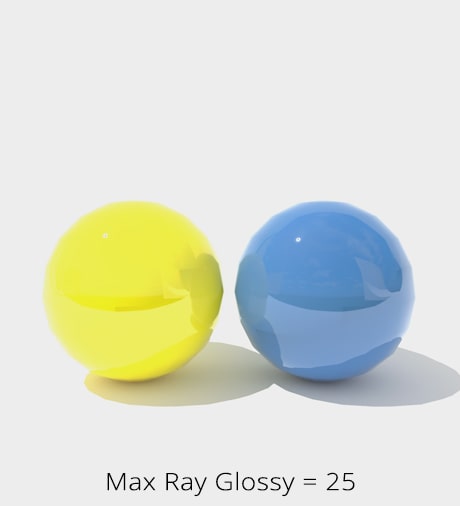
Pay attention to this parameter if the rendered scene contains metal objects, such as metal furniture or household appliances. A specular reflection is a characteristic property of metal. Setting a certain value of the Max Ray Glossy parameter (for example, the value of 3) will limit the number of reflections caused by the specular reflection. It means that the light reflected off the metal surface can reflect three times maximum before the effect stops.
This parameter also affects the level of realism you will achieve in the mirror reflections and reflections in glossy objects that are present in the rendered scene. By limiting the depth of reflections you can control how far the reflections can reach and how they affect the surrounding objects.
Max Ray Transmission
The Max Ray Transmission parameter in Cycles controls the number of times that a ray of light can pass through the materials with transparency or refraction. This parameter is important when working with scenes that contain objects with a certain level of transparency or those that refract the light, such as glass, water, transparent plastic surfaces, etc.
Every time a ray of light lands on such a material, it can reflect, refract and land on the surface of an object again. These recurring interactions can lead to the accumulation of the computational load and, eventually, slow down the process of rendering.
With the Max Ray Transmission parameter, you can limit the number of times that a ray of light can pass through the material. When this number reaches a certain threshold, further interactions with the material will be ignored. This will optimize the rendering process by decreasing the number of extra calculations and increasing the productivity.
It is important to choose the value of Max Ray Transmission according to the specific scene and the requirements of the project. Setting the value of this parameter too low can lead to an undesirable effect of the illuminated objects seeming unnatural in the scene, especially if the objects in it possess high transparency or if they refract the light multiple times. On the other hand, setting the value of Max Ray Transmission too high can result in resource overconsumption, as well as increasing the rendering time without any noticeable improvement in the quality of image.
Let’s say you have a room with large glass windows. The walls are painted, and there’s furniture and different decorative elements in the room. In this situation, the Max Ray Transmission parameter can play an important role in the rendering. The glass windows transmit light and allow you to see the outdoors, but they can also refract and reflect the light. In such a case, Max Ray Transmission can be used for defining the number of times the rays of light will pass through the glass. The low value for this parameter can make windows less transparent on the rendered image, while setting the value of Max Ray Transmission too high can cause excessive calculations and increase the time of rendering. When rays of light pass through the window glass, they can reflect and refract, creating an interesting play of light and shadow in the room. Choosing the optimal value for Max Ray Transmission will allow you to preserve these effects while ensuring optimal rendering performance.
Finding the optimal value for Max Ray Transmission can help optimize the use of resources and speed up the rendering process when you are dealing with large scenes that contain many transparent surfaces. It’s especially important when working with interior designs that include a lot of glass or other transparent materials that can slow down the process of rendering if the parameter is set too high. Max Ray Transmission helps to achieve balance between the quality of image and the productivity of rendering, providing a realistic portrayal of the transparent materials with the optimal use of resources.
If the value for the Max Ray Transmission parameter is set too low, the light won’t be able to pass through the glass, which will lead to a lack of transparency and loss of the natural light in the room. On the rendered image, it can show up as a dark and dull interior that doesn’t get enough daylight entering the room through the windows. On the other hand, setting the value of Max Ray Transmission too high can cause the rays of light to loop and repeatedly reflect inside the window glass, leading to excessive calculations and increased rendering time. This will show up in the image as overexposed or extremely bright areas inside the room, caused by the excessive reflection of light. Thus, changing the Max Ray Transmission parameter will affect the transparency of the glass, lighting in the room and overall quality of the rendering.
Max Ray Transparent
The Max Ray Transparent parameter (i.e., the maximum number of transparent rays) in Cycles is used for controlling the number of times that a ray of light can pass through the transparent surfaces in the scene. This parameter is especially important when working with transparent materials, such as water, glass, transparent plastic surfaces, etc.
The operating principle of this parameter is similar to that of Max Ray Transmission, but Max Ray Transparent is meant to be applied specifically to transparent surfaces. It defines the maximum number of interactions between the ray of light and the material before said ray of light will be considered absorbed or reflected. This parameter allows you to control the level of transparency of the objects in the scene. For instance, if you set the low value for this parameter, it can make the transparent objects in the scene less transparent, which sometimes may be useful (for example, creating an effect of glass with a muddy surface or for creating materials with a high level of refraction).
Setting the optimal value of Max Ray Transparent helps to speed up the rendering process, particularly in scenes that contain a lot of transparent objects. Preventing excessive interactions between rays of light and transparent objects allows you to reduce the number of calculations and enhance the rendering performance.
With this parameter, you can also control the level of noise in the scene. Limiting the number of interactions between rays of light and the transparent objects can help reduce the noise that may occur due to the complex geometry and the materials.
To sum up, Max Ray Transparent is an important parameter for working with transparent materials in Cycles. It allows you to achieve the necessary level of transparency, optimize the performance and control the quality of the rendered image.
Note that the most common practical usage of this parameter for Live Home 3D projects is when you have materials with textures using the alpha channel in your scene. The low-poly 3D models of plants and trees are a good example. They use such textures quite often, since the image of these textures is either partially or fully transparent. In this case, Max Ray Transparent will control the number of times a ray of light will pass through the transparent part of the texture until it fades completely. The thicker the greenery and the denser the meshes with such materials are located, the higher the parameter should be to avoid unnecessary shadows or dark areas. If such objects are absent in your scene, you can set the value of Max Ray Transparent lower than recommended to speed up the rendering.
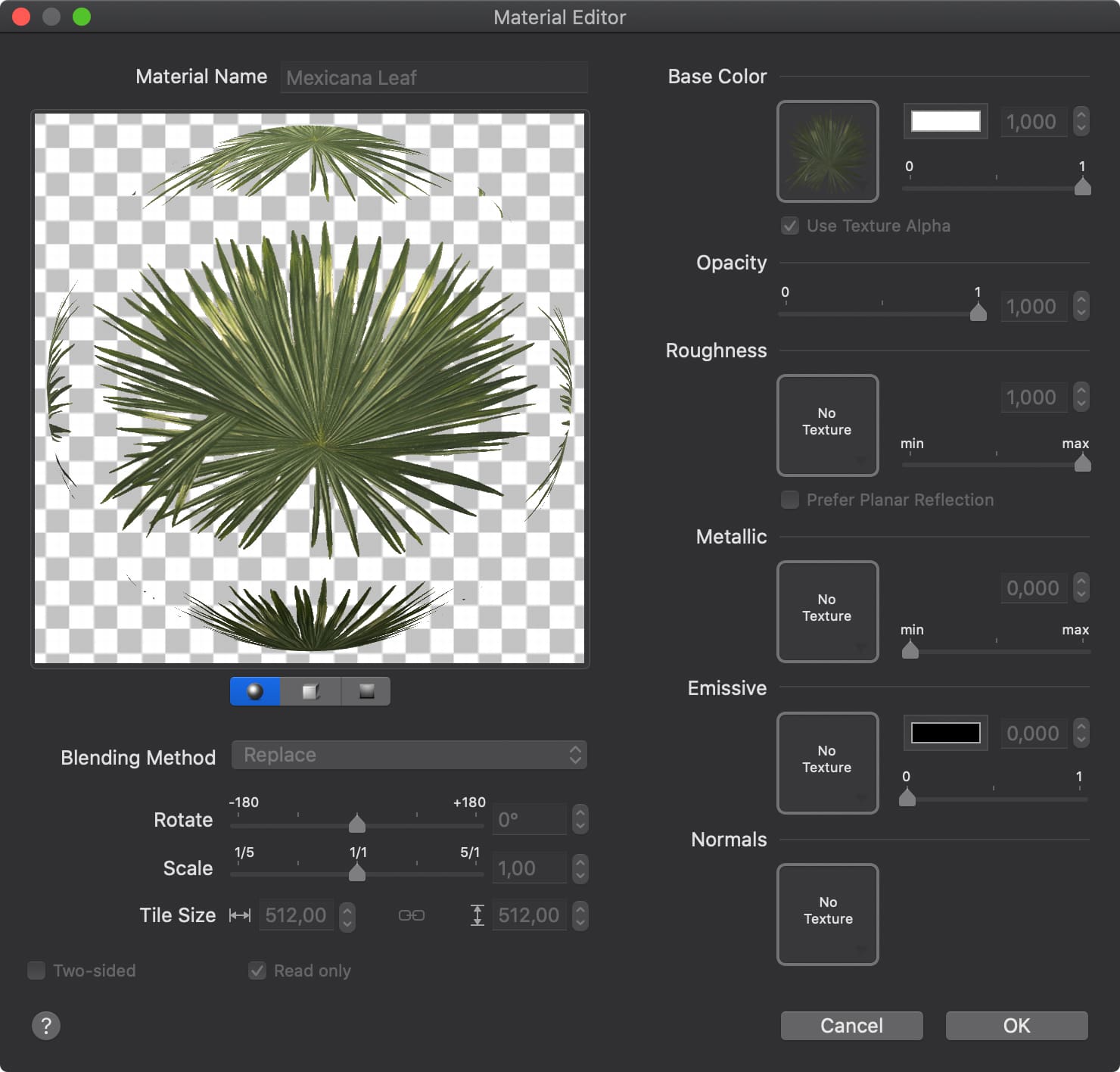
Indirect Light Clamping
Indirect Light Clamping is a parameter in Cycles that controls the brightness of the indirect lighting in the scene. Indirect lighting occurs when light sources reflect from the surfaces in the scene. Sometimes this type of lighting can result in overly bright or overexposed areas on the image, especially if the scene contains surfaces with a high coefficient of reflection. This can happen due to multiple reflections and light dispersion in the scene, which creates unrealistic effects and hinders the ability to control the lighting in the scene.
The Indirect Light Clamping parameter allows you to set the maximum value of the intensity of the indirect lighting in the scene. When the intensity of the indirect lighting exceeds the set value, it is automatically limited, which helps prevent overexposed areas and preserve detail in the lighting of the scene.
Working with Indirect Light Clamping is essential for setting up proper lighting in the scene. It allows you to achieve balance between realism and controlling the brightness of visualization. Finding the optimal value for this parameter usually requires experimenting and evaluating the particular scene and its lighting.
For example, let's say you are working with a sunlit exterior scene that contains a house with large glass windows and an open terrace. The sunlight hits the house and reflects from the glass and land surfaces, creating beautiful indirect reflections and highlights. Not using the Indirect Light Clamping parameter in such a scene can cause excessively bright and overexposed areas on the image, especially on the surfaces that strongly reflect light, such as glass or water in the pool.
Using Indirect Light Clamping enables you to control the brightness of the indirect lighting in the scene. For instance, if you set this parameter at a relatively low value, it will automatically limit the intensity of the indirect light that can enter through the windows and reflect from the surfaces, thus preventing overly bright and overexposed areas from appearing on the image.
However, if the value of Indirect Light Clamping is too low, the glossy, metal and other reflective surfaces won’t reflect enough light, which will negatively affect the realism of the rendered image.
Setting the value for Indirect Light Clamping too high will cause “fireflies” (i.e. random intense pixels in your render); thus, it’s important to use the optimal value for this parameter. We recommend using the default value of Indirect Light Clamping if you don’t have any specific requirements for your render.
Adaptive Sampling
Sampling is used to reduce noise in the rendered scene. It can be adaptive or fixed. Sometimes, the noise level becomes acceptable even before all samples are taken. In this case, further sampling doesn't make any significant improvement, so the rendering can be stopped.
Adaptive Sampling can be used in a scene with different levels of detail. Let’s say you have a scene that contains objects with different levels of detail, for example, detailed textures on some objects and smooth surfaces on the other. With the help of Adaptive Sampling you can control the detailed parts of the scene, such as textures on the objects, since they usually require the involvement of more rays in rendering for preserving all of the details. Adaptive Sampling is capable of automatically increasing the number of rays in the areas where more precision is required.
At the same time, the smooth surfaces or areas where the details are not as prominent can use less rays. This allows to significantly reduce the number of rays in the areas where their use is not critical. The Adaptive Sampling parameter can automatically divide the calculating resources in a way that provides more resources for the areas that require them. This results in speeding up the process of rendering without any losses in quality. The main purpose of using this parameter is optimizing the time of rendering while preserving the high quality of the rendered image.
Noise Threshold
Decreasing the Noise Threshold also helps to fight noise in the rendered image. Setting this parameter to zero is equivalent to using the Fixed Sampling mode, which is the same as switching off the Adaptive Sampling. The Fixed Sampling mode can be used with images that have similar levels of noise in all areas. The number of samples in this mode is defined by the Render Samples parameter.
The Noise Threshold parameter can also be used for optimizing the time of rendering. When the level of noise becomes acceptable, the system can finish rendering in a certain area even if the predefined number of rays wasn’t used.
Setting the value of Noise Threshold too high can lead to image rendering being finished even if it still contains visible noise. This is why it is important to find balance between the level of noise and the time of rendering for achieving the desired result.
Threshold value is normally in the range of 0–1, where 0 means that the rendering process continues while there’s noise in the scene, and 1 means that rendering is finished when the noise is almost eliminated from the scene.
Backfaces Displacement
The Backfaces Displacement functionality is designed for fixing problematic objects in which the double-sided triangles lie in one plane but reflect the light in the opposite direction due to incorrect orientation. If you notice that the polygons in the 3D model are visible in real-time rendering but look dark or black after rendering with Cycles, you can try using Backfaces Displacement to prevent the conflict between the front and back surfaces lying in the same plane.
Bonus: Additional Tips and Tricks From Our Users and Designers
Our users eagerly share with us tricks that help them achieve stunning results in rendering, so here’s some advice from Live Home 3D users and designers that you may find helpful:
- Add some light sources that are not visible in the picture. It will bring more light to the scene and produce a more realistic rendering.
- Set the time of day to morning to get longer shadows. The realistic effect of the rendered scene highly depends on favorable light and shadow combinations.
- Give preference to physically based materials (PBRs) in the scene, either ones from the Material library of Live Home 3D or your own materials. Otherwise, the rendered image may hardly be different from the simple screenshot.
- Use emissive materials instead of lamps whenever possible: LED stripes, furniture with a slight illumination, luminous decorations in the kid’s room, etc., to achieve a more realistic look and avoid an overexposed scene.
Predefined Rendering Settings
Finally, below you will find several rendering setting options for various scenes suggested by the Live Home 3D team.
An example of the render settings for the outdoor scenes.
Sample render settings for interior scenes with artificial light.
A few samples of the render settings that you can use for interior scenes with natural light only.
